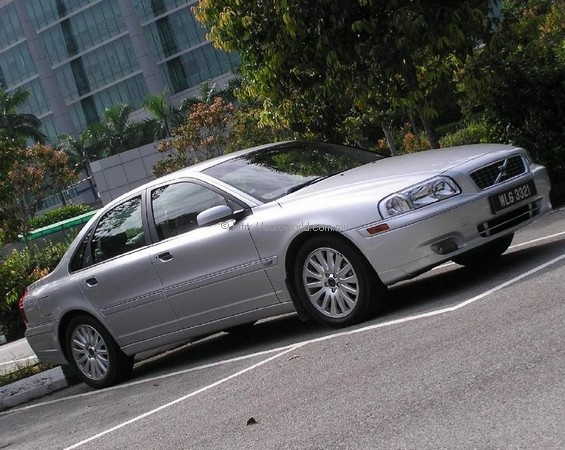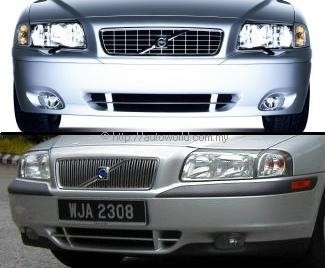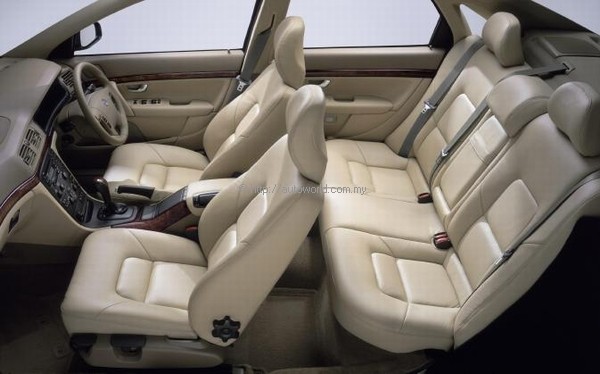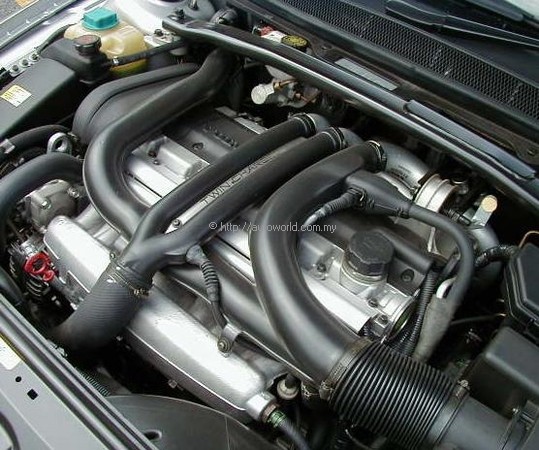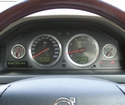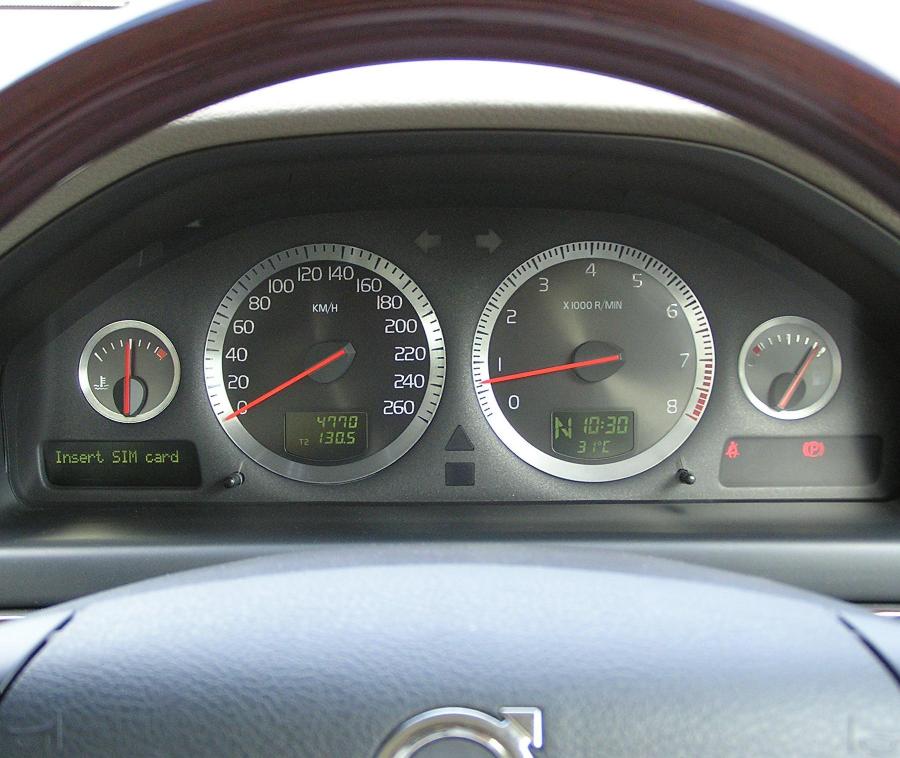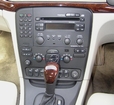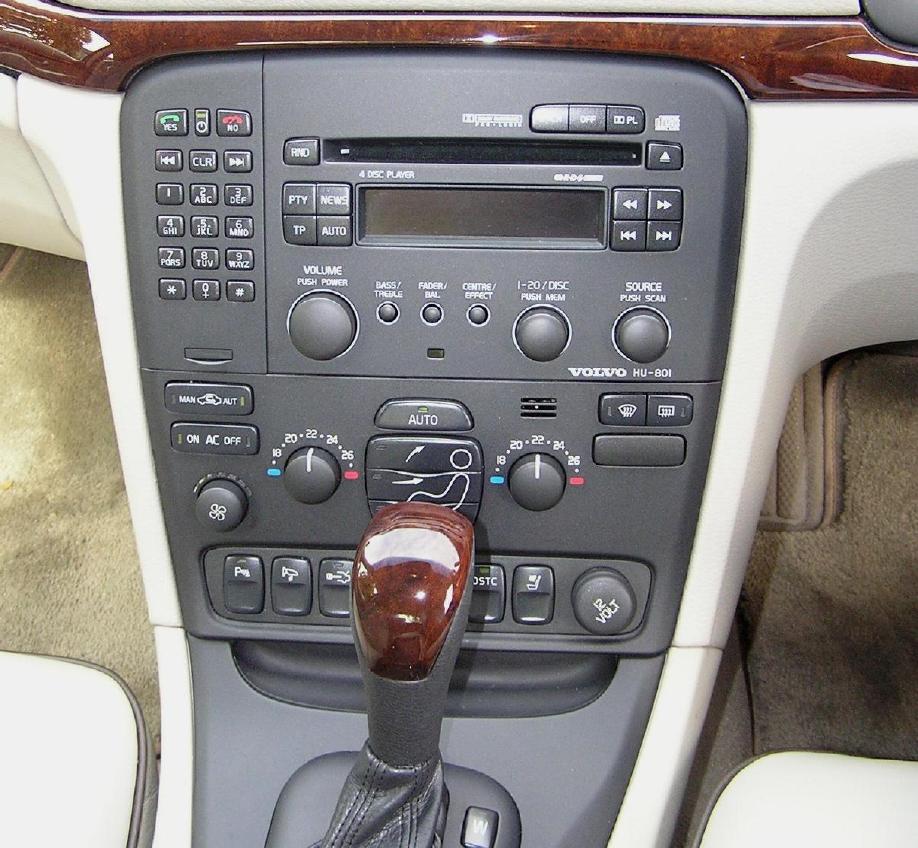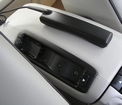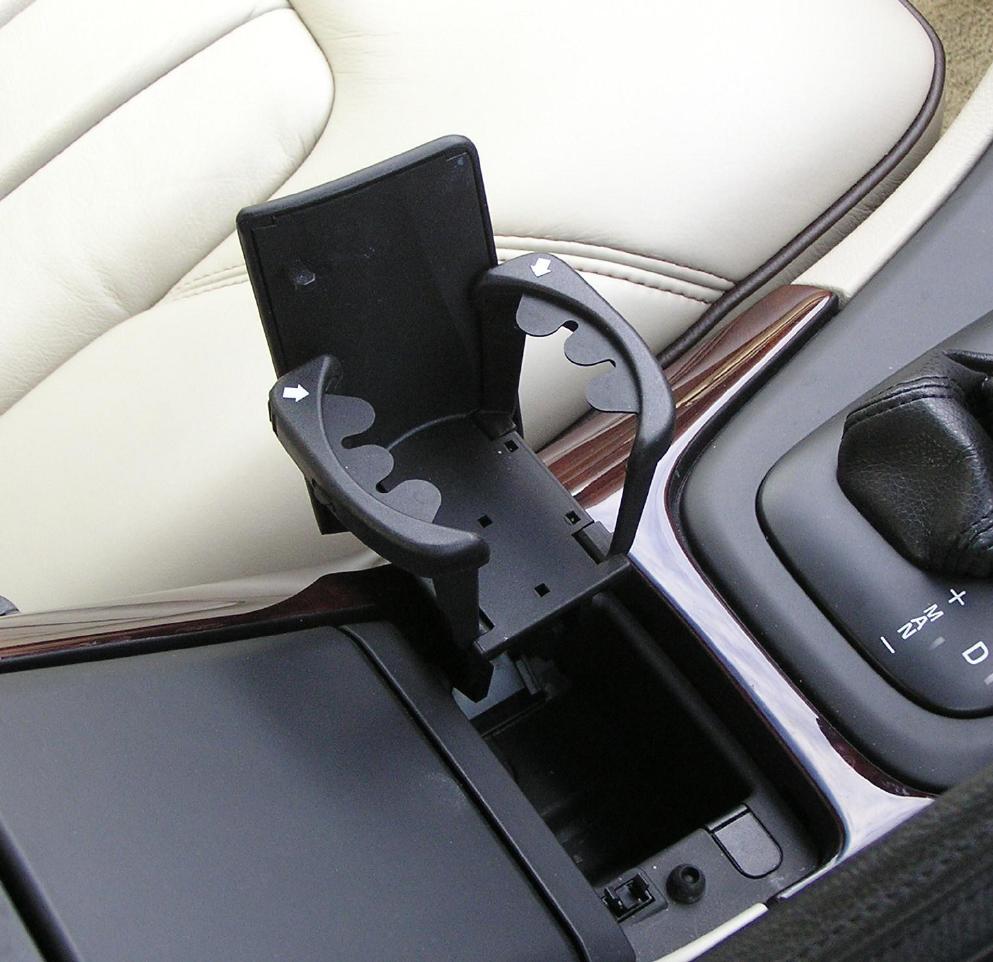Volvo S80 T6 Executive
‘FOUR-C’ tends to be a rather misleading term and has people thinking it refers to a 4-wheel drive system since 4WD SUVs are popular these days.. That’s what I found when I was testing the latest Volvo S80 T6 Executive which is equipped with the advanced chassis system that is also found in the high-performance ‘R’ versions of the S60 and V70.
‘FOUR-C’, which you probably do not know about, stands for Continuously Controlled Chassis Concept. Developed in collaboration with Ohlins, a specialist in suspension components, FOUR-C takes suspension management to a more advanced and sophisticated level using computer control. It is not new to use a computer to manage the suspension (Toyota had such a system in its domestic models in the 1980s) but Volvo’s concept has an extremely high level of refinement and performance.
The refinement comes from the fact that very powerful microprocessors are now available for automobile use and they can compute at lightning speeds. The FOUR-C system’s sensors collect data continuously at a rate of 1/500th of a second on a variety of conditions such as speed and acceleration, lateral acceleration (going round a curve), individual wheel suspension movements, steering wheel position (and even how fast it is turns), engine’s current (calculated) torque and degree of braking.
All the data is analysed and within less than 0.25 of a second, the damper setting can be automatically changed from hard to soft. When you think about it, that’s an incredible speed to change what is essentially a mechanical component’s setting and it is done without the driver feeling the transition. In fact, Volvo claims that the system also works well on ‘washboard‘ roads which have corrugations very close together and usually ‘rattle’ the occupants.
FOUR-C is a chassis engineer’s dream come true because it does away with the need to find that balance between good ride comfort and good handling. These two aspects are conflicting and emphasis on one often means sacrificing the other. That is why the big luxury cars of earlier years wallowed like water buffalos – the requirement was for comfort and suspension technology then did not offer solutions that would not make handling mushy.
The Four-C chassis uses a control technology called ‘Sky Hook’ that makes the body feel like it is floating along over irregularities in the road. “It’s almost as if the body of the car is suspended from above on virtual shock absorbers. Hence the expression Sky Hook”, explained Marcus Rothoff, head of Four-C Technology development at Volvo Car Corporation.
When taking a curve, damping is controlled so that pressure on the road surface is distributed optimally between the four wheels. Well-balanced road surface contact promotes fast and distinct steering response. To help provide controlled road holding and stability even at higher speeds, damping increases automatically with road speed. If lateral acceleration increases at the same time, for instance in a curve, this too increases the damping rate. When the car is heavily laden, the damping rate is increased to reduce the risk of the suspension bottoming out and to maintain the car’s ride and road holding characteristics. During braking and acceleration, the system automatically strives to keep the body level with the road surface, without the dipping at the nose or squatting at the rear.
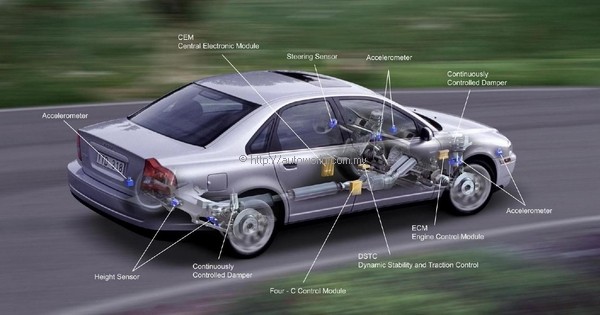 |
| The various elements in the FOUR-C chassis technology |
Having FOUR-C also means that the car must have DSTC (Dynamic Stability and Traction Control) because some of the sensors of the DSTC package are needed to provide information for the FOUR-C management system. Having a combination of FOUR-C and DSTC thus makes the S80 an exceptional car in its class, offering the handling prowess of a sportier model and the luxury of a limousine.
The platform for the S80 is the ‘P2’ platform and it was this platform that marked the transition from rear-wheel drive – central to Volvo’s Dynamic Safety philosophy for many decades – to front-wheel drive as the last of the big Volvos was retired and the S80 was the first large Volvo with FWD. The P2 platform is quite a versatile one since it is also used for the XC70 Cross-Country and the XC90.
There are a few engines available for the S80 and for this flagship version, the most powerful of the lot – an in-line DOHC six with twin turbochargers blowing into 2922 cc – is installed under the long bonnet in a transverse orientation. This is a 200 kW/272 bhp, 380 Nm powerhouse which provides lots of ‘oomph’ when you need it and yet has good low-end flexibility, thanks to continuously variable valve timing (from Japan’s Aisin-Seiki). The variable timing is only on the exhaust valves and also helps in making the engine more environment-friendly.
Like many European luxury sedans these days, the transmission is a auto-manual type which Volvo calls ‘Geartronic’. It’s a 4-speeder which can change its shift points to adapt to the driver’s style of driving as well as motoring conditions. It is not known just how long the adaptation takes as some transmissions need some distance before the pattern changes. However, the longer the car is driven too, the better the computer gets to ‘understand’ the driver because more and more sampling is done so the shifting is eventually very smooth (if you do mostly urban commuting).
The latest S80 doesn’t look different from the earlier one which received much praise when it was launched some years back. At that time, the new Volvo was significant because it represented the start of the new range for the 21st century. The detail changes made for the latest version can be seen in the new ‘egg-crate’ grille at the front and some re-profiling of the nose so that the transition from top to side is more gentle. The door mirrors are also new, with a slimmer profile, and small lights at the bottom of each unit provide illumination near the door.
At the rear, you may notice that something is different but cannot place it unless the earlier version is parked alongside. Then you will see that the numberplate panel is new, the tail lights are smaller and the bumper is new. Not so obvious is the fact that the brake lights now use LEDs, enabling them to brighten more quickly than conventional bulbs.
Inside, the changes made have endowed the cabin with a more prestigious feel. It still has that same spacious, airy and Scandinavian feel with light coloured trim. Someone once told me that the Swedes consciously choose light colours because they have a rather dull climate most of the year but I feel that dirt and stains appear on light trim too obviously so they may not be practical. There are new door panels giving a smoother transition into the dashboard and the instrument panel also features sportier meters with broad polished aluminium rings.
The centre console is packed with 46 pushbuttons and 6 rotating knobs – but 14 of those are for the standard GSM telephone that comes with the car. The phone is neatly integrated into the console box cover between the seats and there are buttons on the steering wheel to accept and cancel calls, while dialing is done on a keypad to the left side of the centre panel. To activate the phone, you just slot your SIM card into the small holder on the panel. Needless to say, there is handsfree operation as standard.
One thing that I always like to look at is cupholders and there are so many different designs these days. The one in the T6 cleverly folds to retract into a square opening just next to the handbrake lever but it is rather flimsy – ‘A’ for design, ‘F” for practicality.
Rear accommodation is good with generous legroom and headroom. This is, after all, a car that is for those who will have chauffeurs so the comfort of the person behind is paramount. For years, Volvo has excelled in this department since it employs orthopaedic specialists in its design department and they have ensured that the seats always have a structure that minimize fatigue by inducing a good posture.
This is a Volvo so I don’t need to talk about safety. The company built its reputation on safety and so experienced is the company in this field that Ford, its parent company, has made Volvo the unit to lead in safety development for the group. So if a serious accident cannot be avoided, the T6 would be among the best cars to crash in.
Where the driving experience is concerned, the T6 is a really nice car to be in as a driver or as a passenger. That FOUR-C technology works as advertised but in such a seamless way that you do not actually notice it. In fact, it would take some extensive testing on different surfaces to really discern the changes because they are so subtle, yet make a difference. In a sense, it is another approach to Volvo’s deeply ingrained philosophy of providing a consistent character to the car’s dynamics, whether they are in terms of handling or ride comfort. Volvo’s engineers believe that consistency is important so that the driver never gets caught by changes in handling which are too great.
The FOUR-C technology, as mentioned earlier, adapts to surface conditions and it stands to reason that on rough surfaces, you aren’t going to be pushing the car hard, so a softer setting is fine. But when you get onto smooth roads and they begin to snake through the hills, the car tracks obediently with no roll. In the past, this would not have been possible if the car had felt comfortable on the rough roads. Considering that it is a large car, the T6 is commendably agile and the new ZF steering system gives a more precise feel.
Also impressive is the engine and the idea of having two turbos is not just to make some sort of statement but it actually works better to have two smaller turbos blowing into three cylinders each than one large blower. The smaller turbos have smaller turbines so their rotational speed can be increased more quickly, virtually eliminating any lag. This gives the T6 impressive low-end acceleration and maintains peak torque over a 3200 rpm band.
At RM333,301 (without insurance), the T6 is obviously a car for those who inhabit the upper strata of society or their company policy permits them a car of this class. Given the fact that it is as pleasurable to drive as to be driven in, chances are that the chauffeur will get full-day breaks on weekends because the owner will want to be the one behind the wheel!
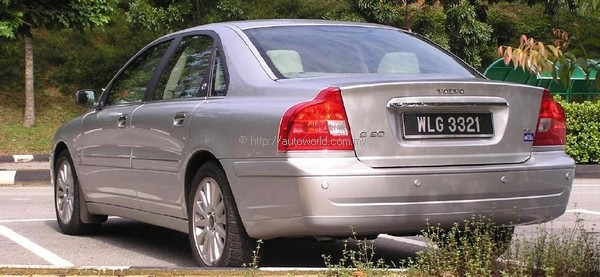 |




